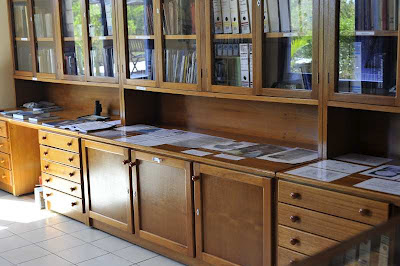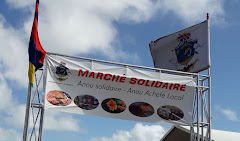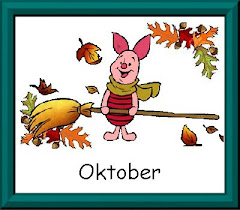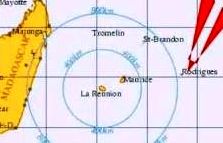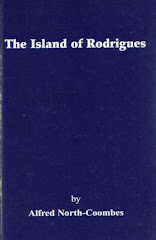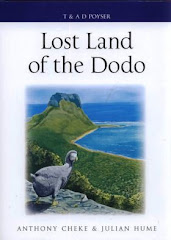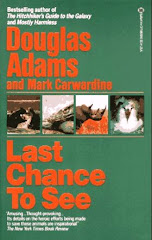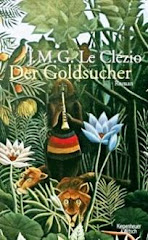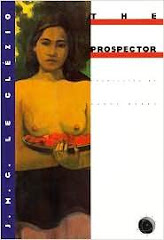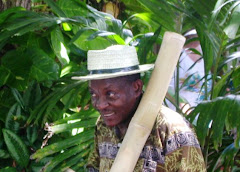Transit der Venus 08.06.2004 Connally's Springs in North Carolina
Eines der seltensten astronomischen Ereignisse der Menschheitsgeschichte wird heute und morgen stattfinden, der Transit der Venus.Nur 6 Venus Transits wurden in den letzten 400 Jahren beobachtet, und wer diesmal nicht gucken kann, hat keine Chance mehr, es in seinem Leben zu tun, denn der nächste Transit findet erst wieder 2117 statt.
Der
Transit tritt
auf, wenn sich die Venus direkt zwischen Erde und Sonne bewegt, ein Ereignis, das weniger als einmal im Jahrhundert
passiert. Es findet in
Paaren statt, die 8 Jahre auseinander liegen (das erste dieses Paares war im Jahr 2004).
Der Transit der Venus hilft Wissenschaftlern mehr über Planeten weit außerhalb unseres Sonnensystems zu erfahren. Die Astronomen, die die Transits von 1874 und 1882 observiert haben, waren in der Lage die Distanz von der Erde zur Sonne bis auf 1 % ihres tatsächlichen Wertes genau zu bestimmen. -
The transit of
Venus across the sun is one of the rarest celestial events ever
witnessed in human history. Only six Venus transits have been observed
in the last 400 years, and if you miss this one, you're out of luck. The
next transit of Venus occurs in the year 2117.
The transit occurs when Venus moves directly between the Earth and sun, an event that happens less than once a century. It takes place in pairs eight years apart (the first in this pair was in 2004)
The Venus rare journey will help scientists learn more about planets far beyond our solar system
Astronomers who watched the 1874 and 1882 transits were able to determine the distance from the Earth to the sun to within 1 percent of its actual value.
The last transit of Venus in front of the sun in 2004.
Photograph: Attila Kisbenedek/AFP/Getty Images
Ein kleiner schwarzer Punkt wird das Gesicht der Sonne in ganz Europa verschönern, wenn sie am Mittwoch aufgeht, und Venus ihre seltene und historische Reise quer durch die brennende Scheibe unseres Muttergestirns antritt.
Der Start des Transits wird sichtbar sein in Nord-und Zentralamerika und den nord-westlichen Ländern Südamerikas. Teile Asiens und Australiens werden die ganze Show sehen.
In früheren Jahrhunderten schickten Nationen ganze Heerscharen von Astronomen in ihre entferntesten Gebieten, um die Reise des Transits zu dokumentieren.Es war die erste weltweite wissenschaftliche Zusammenarbeit in der Geschichte überhaupt und beantwortete die dringende Frage nach der Größe des Sonnensystems.-
A small black dot will grace the face of
the sun as it rises (over Europe) on Wednesday, when
Venus makes a rare and historic journey across the burning disc of our parent star.
The start of the transit will be visible from North and Central America and the north-western countries of South America. Parts of Asia and Australia will see the entire show.
In previous centuries, nations dispatched astronomers to their farthest territories to record the transit in progress. In doing so, they embarked on the first global scientific collaboration in history and answered the pressing question of the size of the solar system.
This photo was taken on 6 December 1882 by the photographers of the American expedition
stationed at Cedar
Keys, Florida. Of the hundreds of photographic plates exposed by
the eight American transit expeditions, only eleven from Florida have
survived. Taking pictures of the transit was almost a military
operation, the photographic apparatus a huge construction.
Die ersten Beobachtungen eines Venus-Transit kam von Jeremiah Horrocks in Much Hoole, einem winzigen Dorf in Lancashire. Am 24. November 1639 beobachtete Horrocks als der Planet die Sonne durchquert, durch ein kleines Teleskop auf ein Blatt Papier projiziert.
Die wissenschaftliche Bedeutung des Transits wurde von Edmund Halley deutlich gemacht , dem zweiten britischen königlichem Astronom, er rief bereits im Jahre 1716 Nationen auf, Kraäfte zu bündeln und dieses Ereignis von allen geografischen Positionen auf der Welt zu dokumentieren um den Abstand von unserem Planeten zur Sonne zu berechnen, und somit die Größe des Sonnensystems zu erarbeiten.
Halleyschen Essay war visionär, geschrieben fast 50 Jahren, bevor der nächste Transit im Jahr 1761 stattfinden würde. Zu dieser Zeit wussten die Astronomen nur relative Entfernungen im Sonnensystem, zum Beispiel, dass Jupiter fünfmal weiter von der Sonne als die Erde entfernt war. "Sie kannten nicht die Entfernung der Erde zur Sonne, eine Basiseinheit Es war wie eine Karte ohne Maßstab", sagt Andrea Wulf, Autorin des Buches Chasing Venus: the Race to Measure the Heavens.(2012) -
The first observations of a transit of Venus came from Jeremiah Horrocks in Much Hoole, a tiny village in Lancashire. On 24 November 1639, Horrocks watched as the planet traversed the sun after projecting its image on to a sheet of paper through a small telescope.
The scientific importance of the transit was made clear by Edmund Halley, Britain's second astronomer royal, who in 1716 called on nations to join forces and record the event from positions around the world. Timing the transit from different spots on Earth allowed astronomers to calculate the distance from our planet to the sun, and so work out the size of the solar system.
Halley's essay was visionary, written nearly 50 years before the next transit was due in 1761. At the time, astronomers knew only relative distances in the solar system, for example, that Jupiter was five times further from the sun than Earth. Their best estimate of how far Earth lay from its star was 55m miles. "They didn't know the distance from Earth to the sun, and that was a base unit. It was like having a map without the scale," said Andrea Wulf, author of the 2012 book Chasing Venus: the Race to Measure the Heavens.
"Was war so anders war, dass keine Beobachtung alleine funktionieren würde, sie mussten gepaart werden. Soviele Astronomen wie möglich mussten an soweit entfernt und auseinder liegende Orte wie möglich gesendet werden", sagte Wulf. "Das war das erste wirklich globale internationale Zusammenarbeit, die die Grundlagen der modernen Wissenschaft legt."
Der Weg, den die Venus über das Gesicht der Sonne macht, variiert je nachdem von wo aus der Transit gesehen wird. Die Halleysche Methode benötigte Paare von Astronomen, einen bekannten Abstand für die Zeit des Beginns und des Ende des Transits. Zusammengenommen ermöglichten diese Zahlen, die Trennung von Erde und Sonne mit Hilfe der Trigonometrie zu berechnen.
Die Briten schickten James Cook auf der Endeavour um den Transit von Tahiti aus zu beobachten, seine Mannschaft verliebte sich dermaßen in die Einheimischen, dass sie nur flüchtige Notizen über den Transit selbst machten. Andere erging es schlimmer. Dem französischen Astronom Guillaume Le Gentil wurde die Einreise nach Pondicherry verweigert zum ersten Transit 1761 und so sah er hoffnungslos vom Meer aus zu (nicht unweit von Pingré). Er blieb in der Gegend um den zweiten Transit im Jahre 1769 zu beobachten, nur dass Wolken seine Sicht verschleierten. Nach Hause zurückgekehrt, entdeckte er, dass er zwischenzeitlich seine Anstellung und sein Anwesen verloren hatte, seine Erben hatten in für tot gehalten und es aufgeteilt.
Der Halleysche Plan war ein Erfolg trotz der Strapazen derer, die auszogen, um den Transit zu beobachten. Die Astronomen teilten ihre Aufzeichnungen und kamen schließlich zu einem neuen Maß für die Entfernung zwischen Erde und der Sonne von 93m bis 97m Meilen. Heute ist die akzeptierte Entfernung 92.96m Meilen (149.6 Mio. km).-
"What was so different was that no observation on its own would work, they had to be paired up. You had to send astronomers to as many, and as far apart, places as possible," said Wulf. "This was the first truly global international collaboration which lays the foundations of modern science."
The path Venus takes across the face of the sun varies depending on where the transit is viewed from. Halley's method called for pairs of astronomers a known distance apart to time the start and end of the transit. Taken together, the astronomers used these figures to calculate the separation of the Earth and sun using trigonometry.
The British sent James Cook on the Endeavour to witness the transit from Tahiti, where his crew became so enamoured with the locals they made only cursory notes on the event. Others fared worse. The French astronomer Guillaume le Gentil was barred entry to Pondicherry for the first transit and watched hopelessly from sea. He stayed in the area to watch the second transit in 1769, only for clouds to obscure his view. On returning home, he discovered he had lost his job, and his heirs had divided up his estate, giving him up for dead.
Halley's plan was a success despite the hardships of those who set out to observe the transit. The astronomers shared their records and eventually arrived at a new measurement for the distance between Earth and the sun of 93m to 97m miles. Today, the accepted distance is 92.96m miles.
When does it happen?
The last transit of Venus
of the 21st century occurs on 5 and 6 June 2012 depending on where you
are viewing from.
How
long does the transit last?
Venus takes nearly seven
hours to cross the face of the sun, but the event is divided into four
"contacts" that mark different phases of the transit. Venus makes first
contact when it encroaches onto the disc of the sun. Twenty minutes
later, on second contact, the planet will be fully silhouetted. On third
contact, at 5.37am BST, Venus will beginto leave the sun, and the
transit will be over on fourth contact at 5.55am BST. (Time UK)

Where
can I see it?
The whole transit is visible from
Alaska, and parts of northern Canada, and from New Zealand, much of
Australia, Asia and Russia. In the US, the transit will be in progress
as the sun sets on 5 June. In East Africa, Europe and Scandivia, the
transit will be under way as the sun rises on 6 June. Much of South
America and western Africa will not see the event.
How
can I watch it safely?
Never look directly at the sun,
it will damage your eyes. You can use eclipse viewing glasses that carry
a CE mark and are not damaged or worn, but only for a few minutes at a
time. Venus is large enough to see with the naked eye and will appear as
a spot about 1/32 the width of the sun. It is not safe to look at the
sun through regular sunglasses. For a better view, use a small telescope
or a pair of binoculars to project an image of the sun on to a screen.
Can
I watch online?
Nasa will broadcast a live webcast of
the transit from the Mauna Kea Observatories in Hawaii.
In Rodrigues it will hopefully be visible tomorrow morning from 6.20 to 8.00 am.
Sources:























